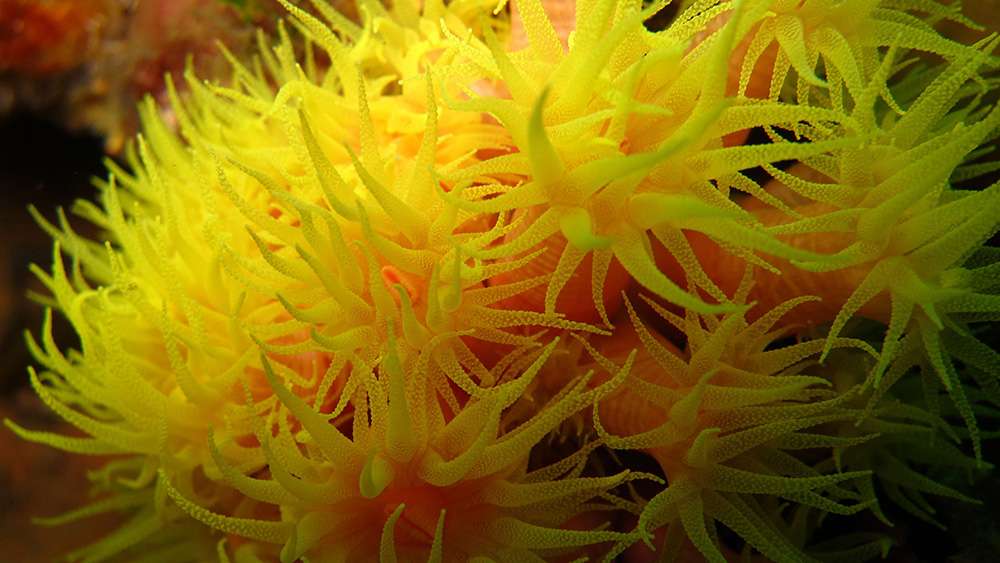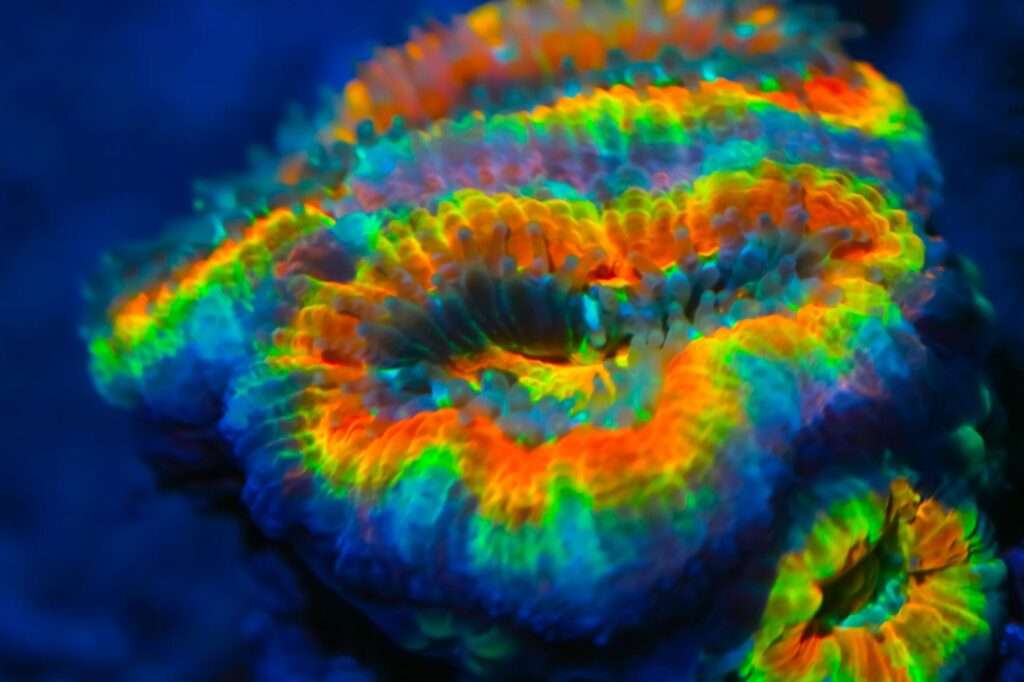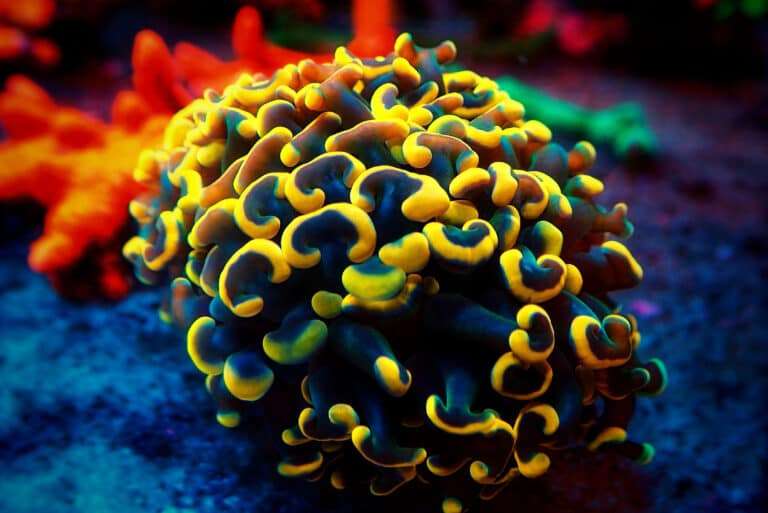
The Coral Yellow Cup when it comes to appearance, Turbinaria frondens is stunning. Young colonies begin in the wild with a cup-like form. On examples living in shallower water, the edges keep growing upward as they get older, developing more complicated designs like the “scroll” and vase shapes. To capture as much light as possible, the specimens that live deeper create horizontal plating. The other common names for the Yellow Cup Coral—Disc Coral, Cup Coral, Scroll Coral, and Pagoda Coral—reflect these distinctive Turbinaria shapes.
The Turbinaria species adopt different distinguishing morphologies. They come in a variety of shapes, such as columns, plates, and vases. When the environment changes, they will dramatically change shape. A species that lives in shallow levels might be transplanted to deeper levels, and vice versa, and it would actually change its structure to take advantage of the lighting in each environment.
Habitat
Oken first described the Turbinaria genus in 1815. There are 80 nominal species of coral, with 10 of those being genuine Australian species. It can also be found all over Australia, especially at the Duke of Orleans Bay, Lord Howe Island, and the Coral Sea. The T. frondens can be found in rocky foreshores, lower reefs, and shallow reefs slopes at depths ranging from 0 to 131 feet.
Morphology
Depending on the depth at which it is located, T. frondens can take on a variety of morphologies and have a light skeletal structure. When they are young, they begin in a cup form. On specimens living in shallower water, the edges keep rising as they get older. These corals also frequently grow in regions with vigorous water currents, which results in wavy forms like the “scroll” and vase shapes. Polyps on the Yellow Cup Coral can engulf and consume larger prey. Mucus secretions are used by the polyps to both catch food and remove waste. They rest on corallites that are just 1.5 to 2.5 mm in diameter at their calices, or corallite openings. On upright formations, the tubular corallite has a morphology similar to an “ant hill” and is clustered close together. They might be cream, tan, bluish-green, grayish green, yellowish brown, or greenish brown in color.
In Captivity

- Feeding
Turbinaria genus has evolved a number of feeding techniques. They get some of their nutrients from a marine alga called zooxanthellae through a symbiotic interaction. The sole symbiotic genus in the Dendrophylliidae family is Turbinaria. They can also take in dissolved organic substances and planktonic creatures as well as food particles from the water column. The Yellow Cup Coral must be fed a range of other items in captivity in addition to relying on lights for its zooxanthellae. Feed meals like enhanced baby brine shrimp, mysis shrimp, finely chopped silversides, cyclopeeze, or other ocean-sourced fish that you can purchase at your local grocery store. They must be fed multiple times per week. When establishing how frequently a specific animal needs to be fed, use common sense. You are not feeding them enough if their polyps start to vanish.
- Social Interactions and Compatibility
This coral behaves nicely around other corals. However, they have the capacity to build a sizable mucus net if their polyps become agitated. Other corals may become harmed if this mucus comes into touch with them. Therefore, there must be enough room between them and other corals. They should be maintained away from other corals’ sweeper tentacles and from the polyps of zoanthid corals. They are safe with fish that are reef-friendly, but they dislike being walked on, sat on, or bothered by any kind of crab.
Table





